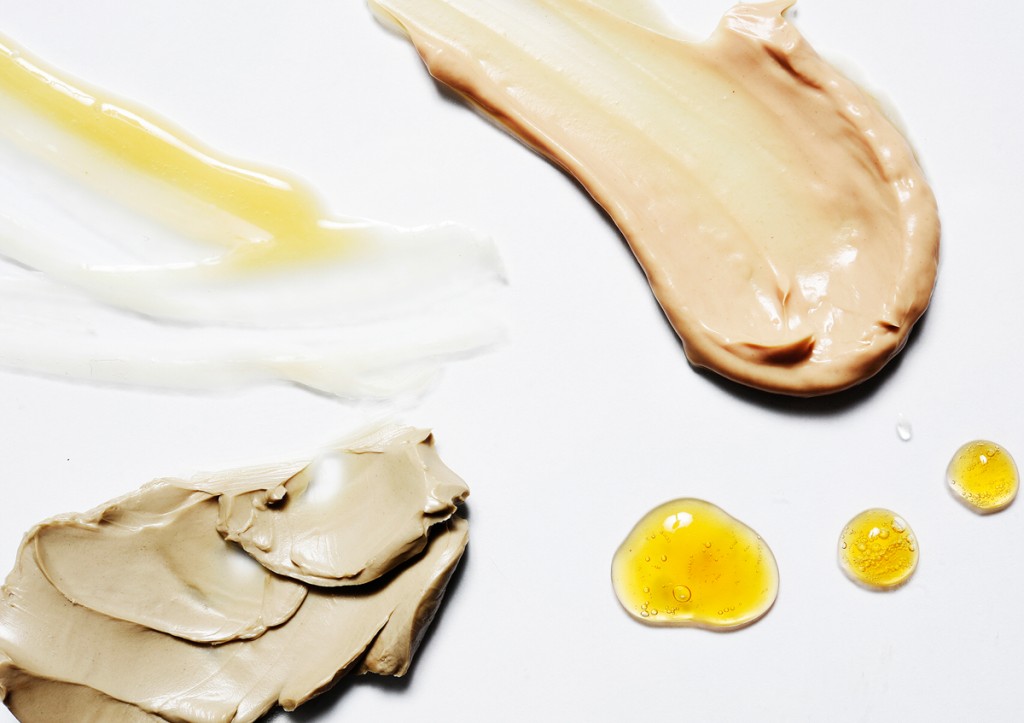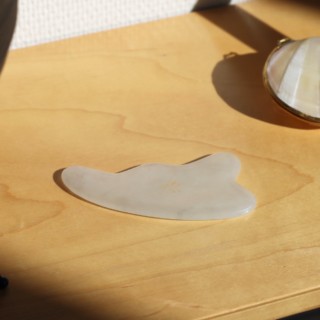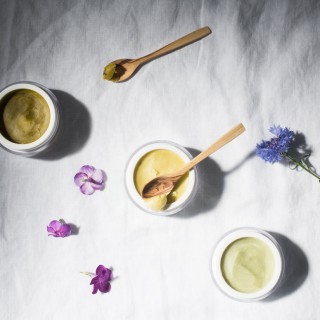Jaana Ailus, a guest writer, cosmetic scientist and the Head of Research and Development at Laponie of Scandinavia writes about sustainable raw materials in cosmetics.
As a cosmetic scientist, I deal daily with cosmetic raw materials and raw materials suppliers. Sustainable sourcing of raw materials is one of my favourite topics, and I was honoured when Katja asked me to write a guest post on the subject.
The easiest way to categorise raw materials as either sustainable or unsustainable, would be to do so by their origin – natural or synthetic. But not all naturally derived raw materials are necessarily sustainable, nor ethically produced. And not all so called synthetic raw materials are unsustainable. It is more important to investigate if a certain raw materials is made from renewable resources, sustainably produced and processed.

Palm oil – the good and the bad
Palm oil is a completely natural and renewable raw material. It is vegan, cheap, and readily available. It is the most common basic ingredient for many raw materials used in cosmetics. It is rarely detectable from a finished product’s INCI list if the raw materials used are made from palm oil. For example, most surface active materials, such as fatty alcohols (e.g. Cetyl Alcohol, Cetearyl Alchol), emulsifiers (e.g. Cetearyl Glycoside, Glyceryl Stearate) and surfactants (e.g. Cocamidopropyl Betaine, Sodium Laureth Sulfate) are all commonly made from palm oil. Even basic Glycerin is surprisingly hard to come by palm oil free!
Palm oil’s popularity is due to the fact that it is very cheap, and because oil palm has the highest yield value for any oil crop. One hectare of oil palm yields c. 3846kg of palm oil, over ten times as much as other oil bearing crops like rapeseed, sunflower or soybean. The growing of oil palm doesn’t that need much irrigation or special care, so it is easy and cost-effective to grow.
Because oil palm has such a high yield value, this has led to the destruction of rain forests to make way for more oil palm plantations. The ecosystems and biodiversity of these areas has been destroyed, and the destruction has been made famous by pictures of sad homeless orangutans. The biggest consumer of palm oil is the food industry, where palm oil derivatives are widely used. (For example, hydrogenated palm oil has replaced butter in many packaged biscuits, because it improves their shelf-life and is much cheaper.)

It is nearly impossible to eradicate palm oil, in both the food and cosmetics industries. Fortunately RSPO (Roundtable on Sustainable Palm Oil) exists. The RSPO is trying to oversee more sustainale palm oil production. RSPO certified palm oil is more sustainably grown and the negative environmental impacts of palm oil are kept to a minimum.
Whenever I discuss new potential raw materials with suppliers, I always want to know which plants are the raw materials derived from. If they are palm oil based, I demand to know if they are RSPO certified. It is surprising how many even Ecocert certified raw materials do not have RSPO certification. A few of the bigger raw materials suppliers are currenlty updating their whole portfolios to raw materials solely derived from RSPO certified sources, since the pressure to switch to more sustainable palm oil is high.
Lovely, yet endangered
Some natural raw materials are derived from plants that are endangered. The global demand for these raw materials is so high, that the plants have been over-harvested, and are now in danger of extinction.
One endangered species is sandalwood, the same tree that sandalwood essential oil is derived from. This wonderfully scented tree is so popular, that is has been over-harvested, and a black market has sprung around selling it in India. Climate change has also decreased the the growth area of sandalwood, adding to the problem.
Another endangered plant is the boswellia tree, the source of frankincence resin and essential oil. Because the business around frankincense is so lucrative, the number of boswellia trees had dramatically dropped in many areas due to over-tapping, which eventually leads to the tree’s death. A prime example of sustainable frankincense harvesting is done by Neal’s Yard Remedies. They have set up a co-op in Oman where the tapping of the boswellia trees is done in a sustainable way. (Neal’s Yard Remedies is one of the forerunners for sustainably sourced ingredients in the cosmetics industry. Their web site lists all the sources of their more exotic raw materials, and how they have been sustainably grown and harvested.)

Sexy sidestreams
While visiting international raw materials conferences, I have happily noticed how sidestream raw materials are gaining in popularity. The term sidestream means something that is created as a by-product in the manufacturing process. The utilisation of sidestream ingredients has gained popularity in recent years, and there are even some ongoing ventures in Finland on the subject.
One of my favourite plant oils is grapeseed oil. During wine production, the seeds of the grape are left behind, and instead of disposing of them, they can be processed into grapeseed oil, which in turn is an excellent cosmetic raw material. Sidestreams of the juice industry include berry seed oils, and for example poppy seed oil is a sidestream of the pharmaceutical industry.
But just because something is a sidestream, does not necessarily make it virtuous. Mineral oil is a sidestream of the petroleum industry, so in that sense it is a sustainable ingredient. How sustainable are products derived from fossil fuels, is another matter entirely.
Food vs Cosmetics
Many of the same raw materials are used in both cosmetics and the food industry. It is often thought that if something is edible, it must be good for the skin as well. (This is not always the case, since the acceptable microbial levels in food and cosmetic raw materials are not the same.)
From a sustainability and land usage point of view, using edible crops for cosmetics can be questionable. Is it better to grow almonds for food or for almond oil to be used in cosmetics? What about avocados? Both require irrigation and arable land, which could be put to use as something other than cultivation of cosmetics raw materials. (To be fair, almond and avocado oils are made from the ”ugly” and mishapen/damaged bits of almonds and avocados, but they could just as well be used for almond flour or guacamole.)

Rough working conditions and child labour
Even if the raw material has been produced in a way that is environmentally friendly, that doesn’t mean that it is sustainable from a human rights perspective. For example, in the textile industry, the garment can be made from organic cotton, but the actual production happens in inhumane conditions where the workers are paid a pittance. The same goes for the manufacture of cosmetic raw materials.
Especially raw materials like shea butter and argan oil can be harvested in a very questionable way in the way of human rights. Usually the people who harvest shea and argan kernels are poorly educated, impoverished women. Big corporations can buy the valuable raw materials for a fraction of the cost while making a profit off the backs of the workers, while these women can’t even afford to send their children to school.
An ingredient that is commonly found in colour cosmetics, mica, is also often unsustainably produced. Mica is mined from the ground, and approximately 25% of mica mines are illegal and use child labour. These illegal mica mines are often dangerous to the workers and pollute the environment.
Fortunaly there are ways to source the above mentioned ingredients sustainably. For example the Global Shea Alliance and Responsible Mica Initiative do work for more ethical and sustainable shea butter and mica. Their websites list companies whose raw materials are sourced without violating human rights.
Produced locally?
There is a common belief that if a something is produced locally, it is automatically more sustainable. But what if the raw materials have been flown half way across the work from the Amazon, or if the raw materials in these local products are from endangered plants, or have been unsustainably harvested?
I therefore urge all conscious consumers to contact cosmetics manufacturers and importers if you suspect that some of their raw materials might be unsustainably sourced. Ask the companies where their raw materials come from, and how traceable their value chains are. And if the companies fail to give satisfactory answers, stop buying their products. If a company’s raw materials are sustainably and ethically sourced, they should have nothing to hide, and the answers to these questions should be readily available.

Kuvat Viola Virtamo














